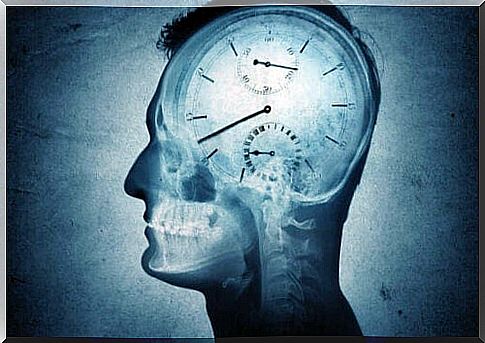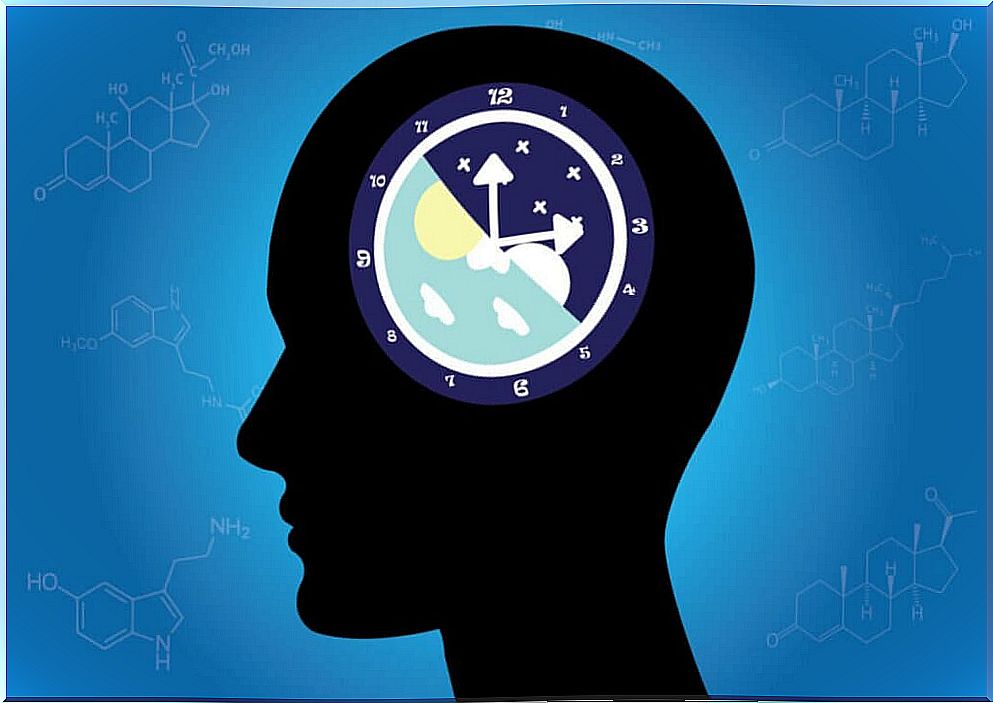What Is Chronobiology And How Can It Affect Us?

Nature is made up of cycles: night, day, seasons, etc. This aroused the interest of scientists who wanted to understand the relationship between these different time cycles and the functioning of the human body. This is how a new discipline has developed and gained momentum: chronobiology.
This new discipline seeks to relate natural cyclic processes with biological processes in humans. The goal of all of this is to find the relationship between certain aspects such as food or sleep and the cycles of time.
What effect does night shift work have on a person? Why is it important to have good times when it comes to eating? All these questions can be answered thanks to the discoveries made by chronobiology.

Chronobiology
Chronobiology is a word derived from three Greek terms. “ Kronos ” means time, “ bio ” refers to life, and finally “ logos ” which relates to studies. This leads us to understand that this is a field of science that studies the synchronization processes that take place in living organisms at different levels of organization.
The interdisciplinarity which studies the laws of the vital processes in time holds a preponderant place there. In essence, chronobiology studies biological rhythms. That is, the cyclical variations in the intensity and character of biological processes and phenomena.
These rhythms are oscillations. Their minimum and maximum values occur at roughly constant time intervals.
They generate predictable and regular changes over time. Chronobiology therefore explores certain practical issues, such as the effects of winter or summer hours on the body, problems related to sleep, and many others.
However, it is important to stress that this scientific field is in no way related to “biorhythms”. An attempt has been made to explain human behavior from the date of birth of individuals. This other discipline is not based on any scientific approach that can support it.
Cycles
Today, chronobiology has reliable mathematical procedures. They allow it to establish parameters that characterize biological rhythms. Among these main parameters, one can quote among others the period, the frequency and the capacity.
To achieve a classification, several criteria can be taken into account. According to Lantero (2001), there are mainly two types of biological rhythms. The first type is related to periodic oscillations of external factors:
- Inert factors. They then operate with their own program.
- Labile factors. This is the case when the viability and development of the organism are influenced by the external environment.
The second type is related to the length of the period in time. The biological rhythms are as follows:
- First of all, the circatidal rhythm. The period lasts approximately 12.4 hours.
- The circadian rhythm. The period lasts about 24 hours.
- The circannual rhythm. The period is one year.
- Then, the rhythm circaseptan. In this case, the cycle length is 7 days.
- Finally, the circatrigintan rhythm. The period is approximately 25 to 30 days.
On the other hand, there is a simpler classification given by García-Maldonado et al. (2011). It is also more used. The weather is again preponderant there. According to this classification, there are 3 different cycles:
- The circadian cycle. Its duration is 24 hours. It is therefore particularly linked to the aspects of day and night.
- Then, the ultradian cycle. Its duration is less than 24 hours and its frequency is therefore generally high.
- Finally, the infradian cycle. This term is used when the period lasts longer than 24 hours. Its frequency is therefore lower.
While it is true that these different biological rhythms exist, the most studied to date is the circadian cycle. This is mainly due to the ease of studying it. This is because of its duration and the environmental changes that occur there.
Rhythms and synchronizers
As we said, the most studied cycles are the circadian cycles. Some of the best known include, for example, body temperature, sleep-wake cycle, growth hormone secretion, blood flow, elimination of drugs, among others.
It is important to specify that all these rhythms are linked together by a complex and interdependent hierarchy. In addition, thanks to chronobiology, it has been discovered that rhythms oscillate from one frequency to another.
In other words, they are not static but they are moving. And this, according to external or environmental aspects.
In addition, it is necessary to emphasize that this organization requires synchronizers. These help to adapt to environmental changes and to coordinate biological rhythms.
In chronobiology, these synchronizers are called “ Zeigebers “. The main synchronizers that we can mention are sound, food, light and temperature.
They generate a balance to develop certain processes that take place in the human body. Their desynchronization or their failure leads to manifestations of discomfort. It can also lead to the development of diseases.
The cerebral aspects of chronobiology
At the level of the brain, chronobiology puts forward the suprachiasmatic nucleus, a structure in which the “central clock” is located. Under natural conditions, this structure is reset every day. It is mainly caused by light and dark, which activates the ganglion cells.
However, other periodic contributions also influence them. These include meal times and scheduled physical exercises . These latter activities activate peripheral clocks which have an important influence on the heart, pancreas, fatty tissue and many other organs.

The relationship of chronobiology with various pathologies
Disturbances in the chronobiological machinery create a disturbance in the output of rhythmic signals from the organism. These effects occur mainly in night workers or people suffering from various pathologies.
It has even been found that there is a relationship between blood pressure or blood pressure and the time of day it is measured. In addition, changes in sleep schedules or in diet can influence the development of these pathologies and many more.
In addition, research such as that of Aza (2015) has revealed that the timing of food intake is a key to obesity. Specifically, eating at night and fasting during the day has been found to be accompanied by impaired glucose tolerance and a decrease in leptin (the satiety hormone).
When it comes to cancer, it has been found that the symptoms of this disease also follow a rhythm. Therefore, the administration of drugs must correspond to it.
This would make it possible to obtain better results in the treatment, while reducing the side effects of the drugs. This is because rhythms can affect the absorption, metabolism, distribution and effect of many drugs.
In short, chronobiology establishes an association between biological rhythms and their effects on the body. Consideration of aspects such as weather and environmental factors is fundamental for the regulation of various processes. This not only meets certain needs, but also prevents various pathologies.










